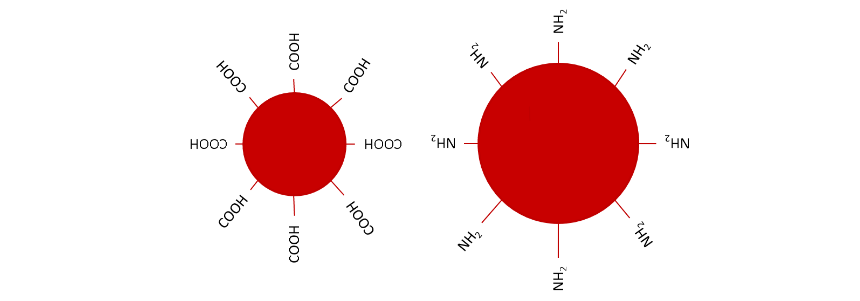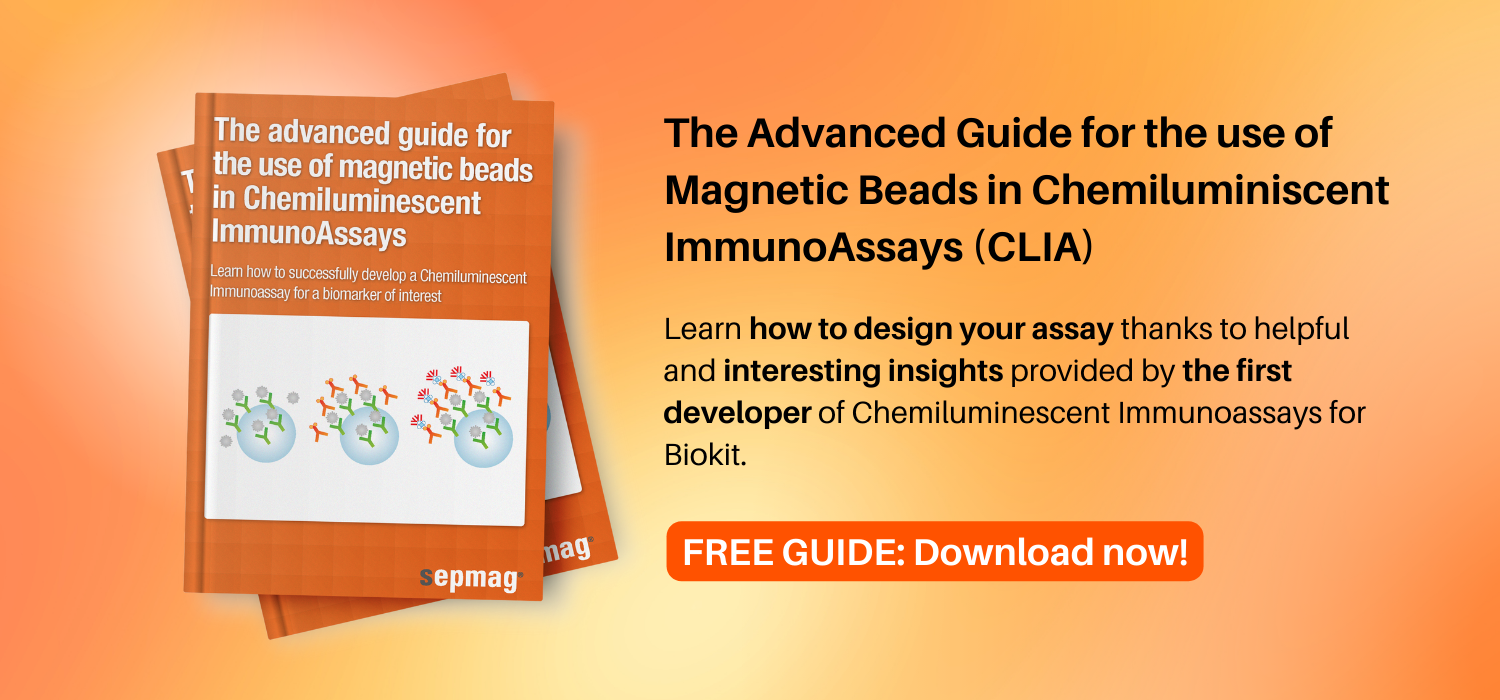This is the first of a series of posts on pros and cons of classical covalent links, which we will publish during the next few weeks. The very first one is about 3 well-known classical covalent links: carboxyl, hydroxyl and amino groups. In the next posts we are going to review other examples, such as tosyl or streptavidin beads.
There are a number of ways by which a molecule can be covalently bound to a nanoparticle. Classical covalent links through carboxyl, hydroxyl, and amino groups have specific advantages and disadvantages inherent to each group. It is important to be aware of these when deciding on a particular functionalized particle for an assay.
This post is about classical covalent links for biomarkers. If you want detailed information about this topic, download our free ebook The Advanced Guide for the use of Magnetic Beads in Chemiluminescent Immunoassays:
How are particles functionalized with carboxyl, hidroxyl and amino groups activated?
Of the aforementioned, the most commonly used is the carboxylated particle. These particles require activation of the surface carboxyl group, typically done by adding carbodiimide (EDC), and optionally N-Hydroxysuccinimide (NHS) or sulfo-NHS and ethyl (dimethylaminopropyl). This activation is performed in order to yield intermediate esters that will then bind to the amino groups in the protein being conjugated to the particle.
In contrast, particles functionalized with surface amino groups require activation of the carboxyl groups on the protein to be attached. These particles have the added advantage of utilizing optional bifunctional crosslinkers, small molecules with an active group present at either end. Crosslinkers can serve as spacers between the bound protein and the particle, or they can serve to expand the repertoire of molecules capable of being conjugated to the particle.
Particles containing surface hydroxyl groups are hydrophilic due to their inherent negative charge. One advantage associated with the hydrophilic nature of these particles is that there will be less aggregation. Additionally, there will be fewer problems that occur with non-specific binding. These particles are more complicated to work with, however, because they require activation in non-aqueous solution to avoid hydrolization of any intermediates. Once activated, however, they can bind a number of different groups, making these particles quite versatile.
Commercially available particles contain a variety of surface functional groups, making it possible to choose between different types of covalent linkages when developing a protocol. Ultimately, the decision to use one functionalized particle over another will depend on the application.
Don't forget to check these posts from our blog in order to get a deeper insight into magnetic particles and immunoassays:






